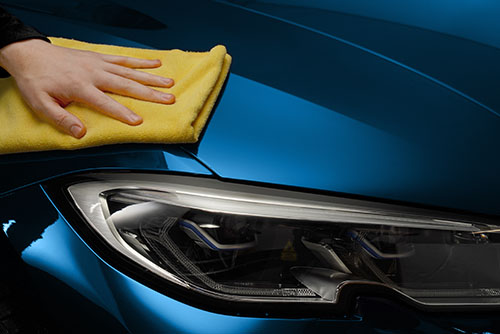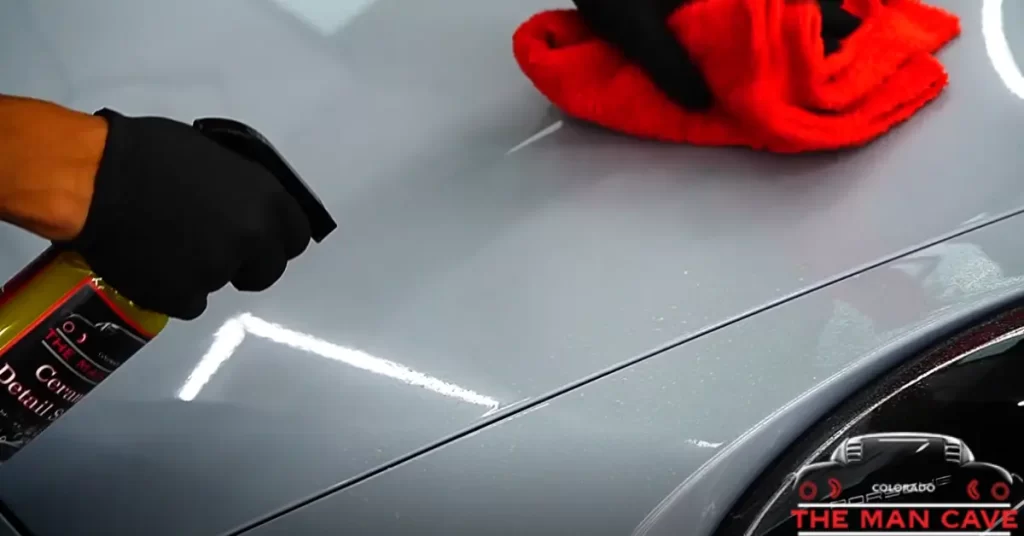Just How Ceramic Coatings Can Change Your Car's Look and Defense
Just How Ceramic Coatings Can Change Your Car's Look and Defense
Blog Article
Just How Ceramic Coating Boosts the Durability of Your Vehicle's Complete
Ceramic coating has emerged as a pivotal development in vehicle care, supplying a substantial enhancement to the durability of a lorry's surface. By creating a durable, semi-permanent bond with the manufacturing facility paint, ceramic finishings supply a powerful obstacle versus ecological risks, including UV rays and chemical contaminants.
What Is Ceramic Coating?
Ceramic coating is a sophisticated protective remedy that improves the longevity and appearance of automotive surface areas. This advanced innovation includes the application of a fluid polymer that chemically bonds with the factory paint, producing a long lasting layer of defense. Unlike conventional wax or sealants, which offer only temporary benefits, ceramic coverings provide lasting resilience versus environmental pollutants and physical wear.
The primary part of ceramic finishes is silica, which forms a solid bond with the vehicle's surface. As a result, lorries treated with ceramic coverings keep their aesthetic allure over time.
Application of ceramic coating calls for thorough preparation, consisting of thorough cleaning and decontamination of the automobile's surface area to guarantee optimum attachment. When used, the coating treatments to create a semi-permanent guard that can last for numerous years when correctly maintained. This ingenious option stands for a considerable development in vehicle care, providing a premium option to traditional methods of surface defense.
Advantages of Ceramic Coating
One of one of the most considerable advantages of using ceramic coating to a car is the improved defense it offers versus environmental damages. This sophisticated protective layer functions as a formidable obstacle versus hazardous elements such as UV rays, bird droppings, tree sap, and acid rain, which can cause fading, etching, and rust of the lorry's paintwork.
Along with protecting versus ecological risks, ceramic coating dramatically decreases the frequency of cleaning and describing. Its hydrophobic buildings ward off water and dirt, permitting contaminants to move off more conveniently, resulting in a cleaner surface for a longer duration. This not only saves time and effort but additionally lessens the damage related to regular cleaning.
In addition, ceramic coating offers a high-gloss surface that improves the automobile's look, offering it a display room shine that lasts. This aesthetic benefit is matched by an increase in resale worth, as a well-maintained exterior typically converts to a more attractive deal on the market.
Inevitably, the advantages of ceramic coating prolong past plain appearances, supplying useful services for long-lasting automobile care and conservation.
Exactly How Ceramic Coating Functions
At its core, ceramic coating functions through a chemical bonding process that integrates with the vehicle's manufacturing facility paint. This ingenious coating is composed of nanoparticles, usually made from silicon dioxide (SiO2), which produce a long lasting and robust layer on the surface of the paint. When applied, the ceramic coating passes through the tiny pores of the vehicle's surface area, creating a semi-permanent bond that improves the paint's protective top qualities.
The result is an ultra-thin, hydrophobic layer that fends off water and impurities, making it harder for dust, crud, and various other toxic wastes to adhere to the surface. This attribute not just simplifies maintenance, as cleaning ends up being much more efficient, but likewise reduces the risk of scrapes and swirl marks that can mar the coating with time.
Furthermore, ceramic finishings supply UV security, securing the paint from harmful sun exposure that can cause oxidation and fading. The chemical composition of the coating makes certain that it stays intact under numerous weather condition conditions, adding to the durability of the car's finish. Generally, the application of ceramic coating is a proactive step that strengthens and protects the visual appeal of a car for many years ahead.
Contrast With Standard Wax
When considering lorry defense alternatives, comparing ceramic coverings to standard wax discloses significant differences in efficiency and durability. Typical wax, while providing a momentary sparkle and a layer of security, usually lasts just a couple of weeks to a couple of months, depending on ecological problems and upkeep methods. On the other hand, ceramic finishes use a far more resilient option, lasting a number of years with proper care.

Additionally, ceramic finishings offer a self-healing building that can fix small scratches and swirl marks when subjected to heat. This is a feature conventional wax can not use. On the whole, while wax may be extra cost effective and simpler to apply, the long-term benefits of ceramic finishes make them an exceptional selection for those looking for to protect the integrity and visual appeal of their car's finish.
Maintenance Tips for Ceramic Coating
Appropriate upkeep is necessary to guarantee the longevity and efficiency of a ceramic coating. To begin with, regular washing is critical; use a pH-balanced car shampoo and microfiber towels to lessen damaging. Avoid automated auto washes that usage extreme brushes, as they can break down the coating over time.

Applying a top-up spray or maintenance item designed particularly for ceramic layers can assist invigorate the hydrophobic properties and enhance shine (ceramic coatings). Avoid utilizing conventional waxes or sealers, as they might interfere with the coating's efficiency
Lastly, think about routine specialist examinations and maintenance by a detailer experienced with ceramic layers. They can examine the condition of the coating and provide specialized treatment, more extending its life and guaranteeing your automobile stays visually appealing for many years to browse this site come.
Final Thought
In conclusion, ceramic coating functions as an effective option for enhancing the longevity of an automobile's finish. By forming a robust, semi-permanent bond with the manufacturing facility paint, it gives vital defense against ecological variables, including UV rays and impurities. The hydrophobic homes of ceramic finishes contribute to decreased upkeep demands, permitting a sustained high-gloss look. In general, the adoption of ceramic layers stands for a considerable advancement in automobile care, guaranteeing optimum paint conservation for several years.
Ceramic coating has arised as a crucial advancement in vehicle treatment, supplying a substantial enhancement to the longevity of a vehicle's surface. When used, the ceramic coating permeates the microscopic pores of the vehicle's surface area, creating a semi-permanent bond that enhances the paint's protective qualities.
When taking into consideration automobile security options, contrasting ceramic coatings to conventional wax exposes significant distinctions in performance and long life.Ceramic coatings develop a strong chemical bond with the lorry's paint, producing a hydrophobic surface area that pushes back water, dirt, and impurities.In verdict, ceramic coating serves as a reliable solution for enhancing the durability of a lorry's surface.
Report this page